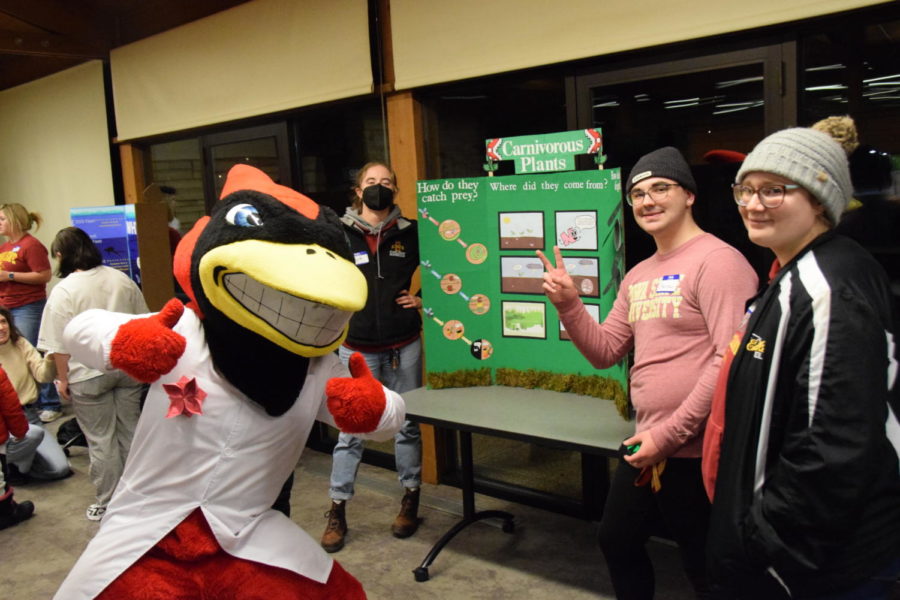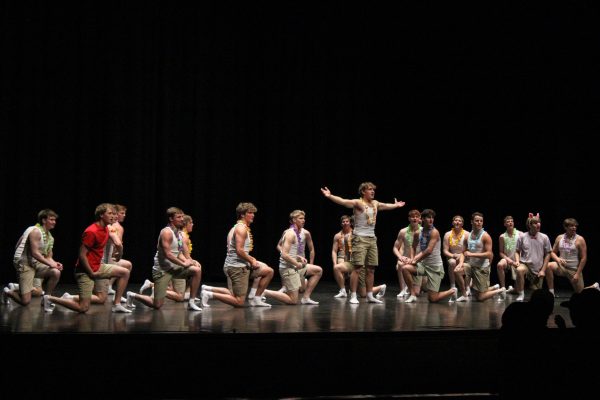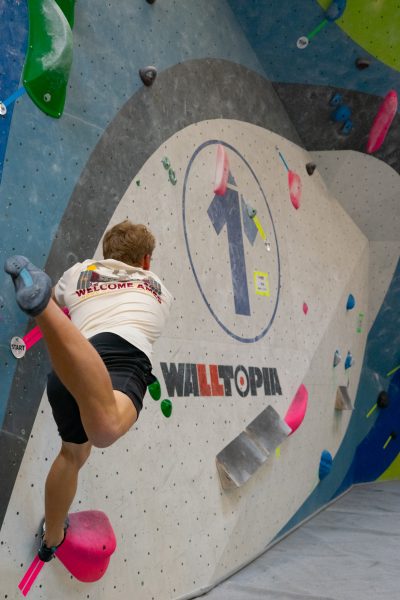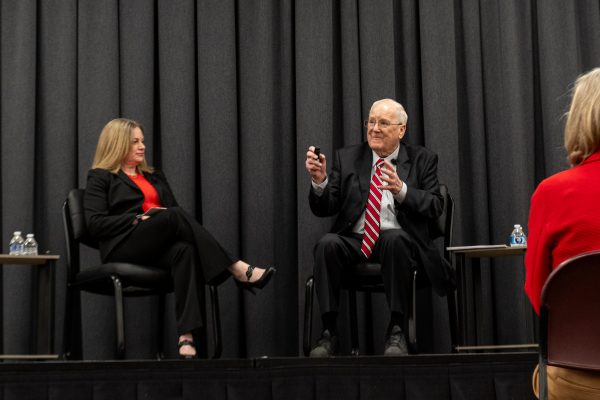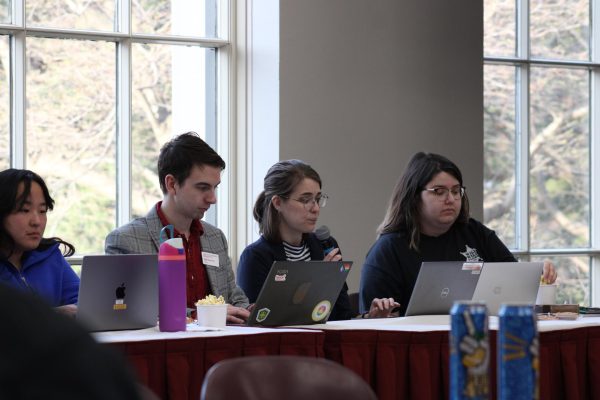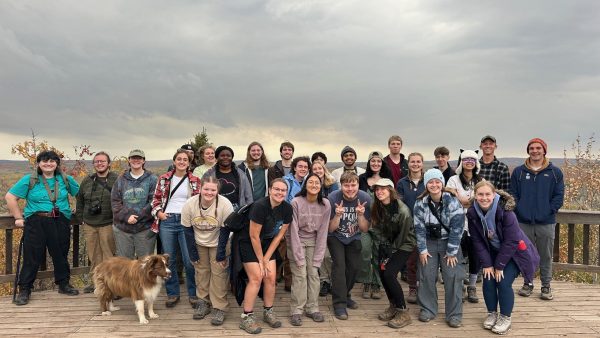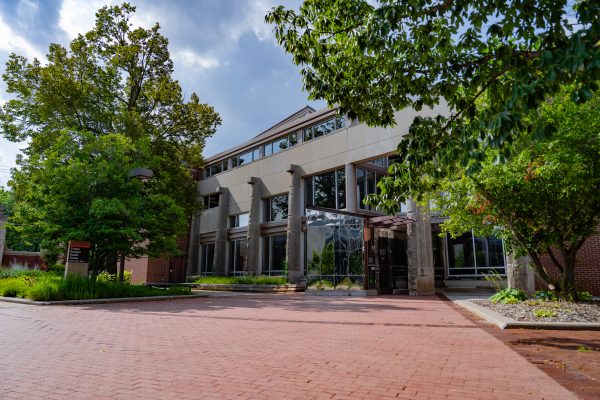Local kids practice science with Cy
Cy posing with Kyra Oberbroeckling, a senior in biology (back) Sebastian O’Bryon, a senior in microbiology (middle) and Morgan Vorwald, a senior in animal science (right).
Students in ENGL 312, communicating science and public engagement, gathered at Reiman Gardens to practice putting challenging concepts into engaging lessons for young children.
Students’ presentations were set up between two rooms in Reiman Gardens’ Malhstede Building. Parents and their kids could walk between booths as they engaged in and participated in the activities and lessons.
“I feel like, in a lot of communications classes, there’s a lot of practice, but maybe not real-life application,” said Emma Murray, an assistant teaching professor in the English department. “This forces the students to actually realize [and] apply the skills we’re learning in class with an audience that will tell them, especially kids, ‘I don’t understand what you’re saying.’”

Many of the students’ stations included games, prizes or activities that would help get kids’ attention. Murray said it was important for the ENGL 312 students to practice putting their topics into digestible formats that would attract and keep kids’ attention.
“It’s hard to communicate science and keep people engaged,” Murray said. “So in the class, we talk a lot about storytelling and narrative and how to use narrative to explain topics in a way that sticks in people’s brains [and] makes them want to engage with the topic.”
Students’ presentations varied from topics like the van der Waals force, a force of attraction between molecules, demonstrated by a student’s pet gecko, to displaced abomasa, a common medical issue in cattle.
The lesson titled “Cows Get Stomach Aches Too” included a cardboard box painted with the classic Holstein spots with a hole cut in the side. Kids could practice treating the fictional cow’s displaced abomasum by reaching into the box and manipulating a balloon filled with air. Another student would also set off a whoopee cushion to add to the realism of the experience.
Kids who partook in the lesson were amused. Shelby March, a senior majoring in animal science on a pre-vet track, said her group chose the topic because it coincided with some of what they learned in their studies.
“This is a huge part of [veterinary medicine], especially in dairy cattle; they’re something that a vet would do very often,” March said. “We wanted to help kids understand, and we thought it’d be interesting and fun.”

Another group of two animal ecology majors, senior Amanda Burger and junior Paige Higby, gave their lesson on why deep-sea animals are so weird. Higby explained the weird features of deep sea creatures could be explained by the environments they inhabit and adaptations they have made to them.
“It’s not necessarily a bad thing that they’re weird; they’re just adapted to the environment,” Higby said. “So, we’ll teach them about how adaptations are good for the environment.”
One group taught students about the process of photosynthesis through the analogy of trees breathing. Nicholas Rogers, a senior in genetics, said that they personified molecules and plants in order to make the topic more accessible for students.
“It’s definitely a really fun way to engage with younger audiences,” said Rebecca Wolfe, a senior in forestry. “It’s a very familiar format for them, so it’s easier for them to engage with it. It’s a little bit silly, and it’s got some snacks. As long as they go away having learned at least a little bit, it’s a success for us.”
One participant of Science with Cy, Joss Hume, said his favorite station had to do with germs and antibiotics because it coincided with the information he is currently learning in his elementary reading class.
Your donation will support the student journalists of the Iowa State Daily. Your contribution will allow us to purchase equipment, send our student journalists to conferences and off-set their cost of living so they can continue to do best-in-the-nation work at the Iowa State Daily.


